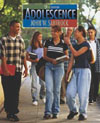A. Drugs and Alcohol
2.1 Why do people use drugs?
2.2 What is tolerance?
2.3 What is physical dependence?
2.4 What is the nature of addiction?
2.5 What are the characteristics of psychological dependence?
B. Trends in Overall Drug Use
2.6 What was the nature of drug use in the 1960s and 1970s?
2.7 What has been the trend of drug use in the 1980s and 1990s?
2.8 How does adolescent drug use in the United States compare to that in other industrialized countries?
C. Alcohol
2.9 What type of drug is alcohol?
2.10 How much is alcohol used by American adolescents?
2.11 What are some potential negative outcomes of alcohol abuse?
2.12 What are the risk factors for adolescent alcohol use?
2.13 Is there a genetic predisposition to alcoholism?
2.14 Is there a personality profile for someone who is likely to develop an alcohol problem?
2.15 What are some possible preventative strategies for alcoholism?
D. Hallucinogens
2.16 What drugs other than alcohol are harmful to adolescents?
2.17 What are the nature and characteristics of hallucinogens, LSD, and marijuana?
E. Stimulants
2.18 What are the most widely used stimulants?
2.19 How does cigarette smoking play a role in the drug problems of youth?
2.20 Have school health programs had success in deterring youth from smoking?
2.21 What is the history of cocaine use?
2.22 How many adolescents use cocaine?
2.23 How prevalent is the use of amphetamines among adolescents?
2.24 What is Ecstasy, and what are some special concerns associated with it?
F. Depressants
2.25 What are depressants?
2.26 How has the use of depressants changed over the past 25 years?
G. Anabolic Steroids
2.27 What are the risks of using anabolic steroids?
H. Factors in Adolescent Drug Use
2.28 What role does early drug use play in adolescent development?
2.29 How can parents and peers help prevent adolescent drug abuse?
2.30 What school-based intervention programs can help reduce adolescent drug use?



 2003 McGraw-Hill Higher Education
2003 McGraw-Hill Higher Education

 2003 McGraw-Hill Higher Education
2003 McGraw-Hill Higher Education